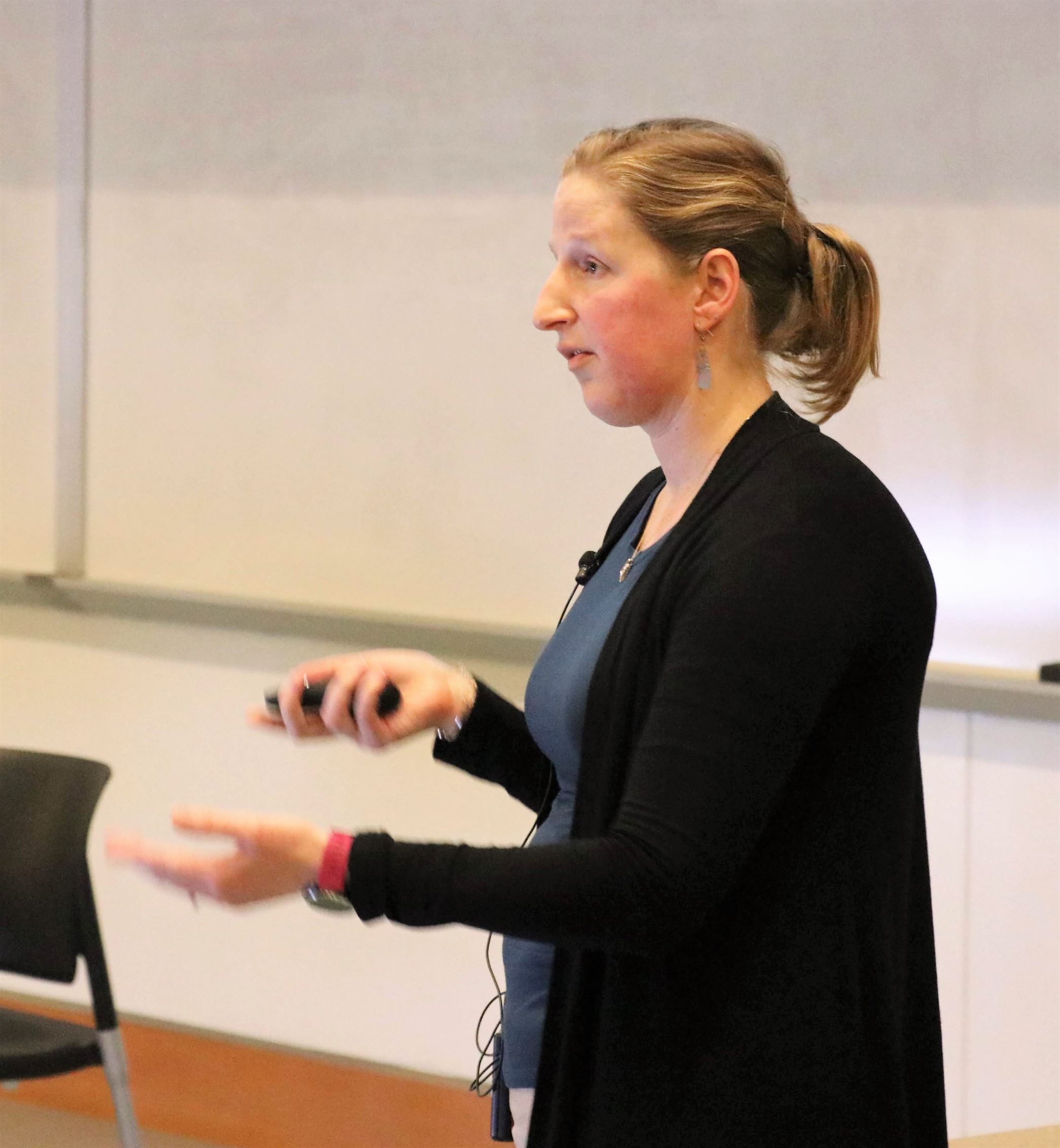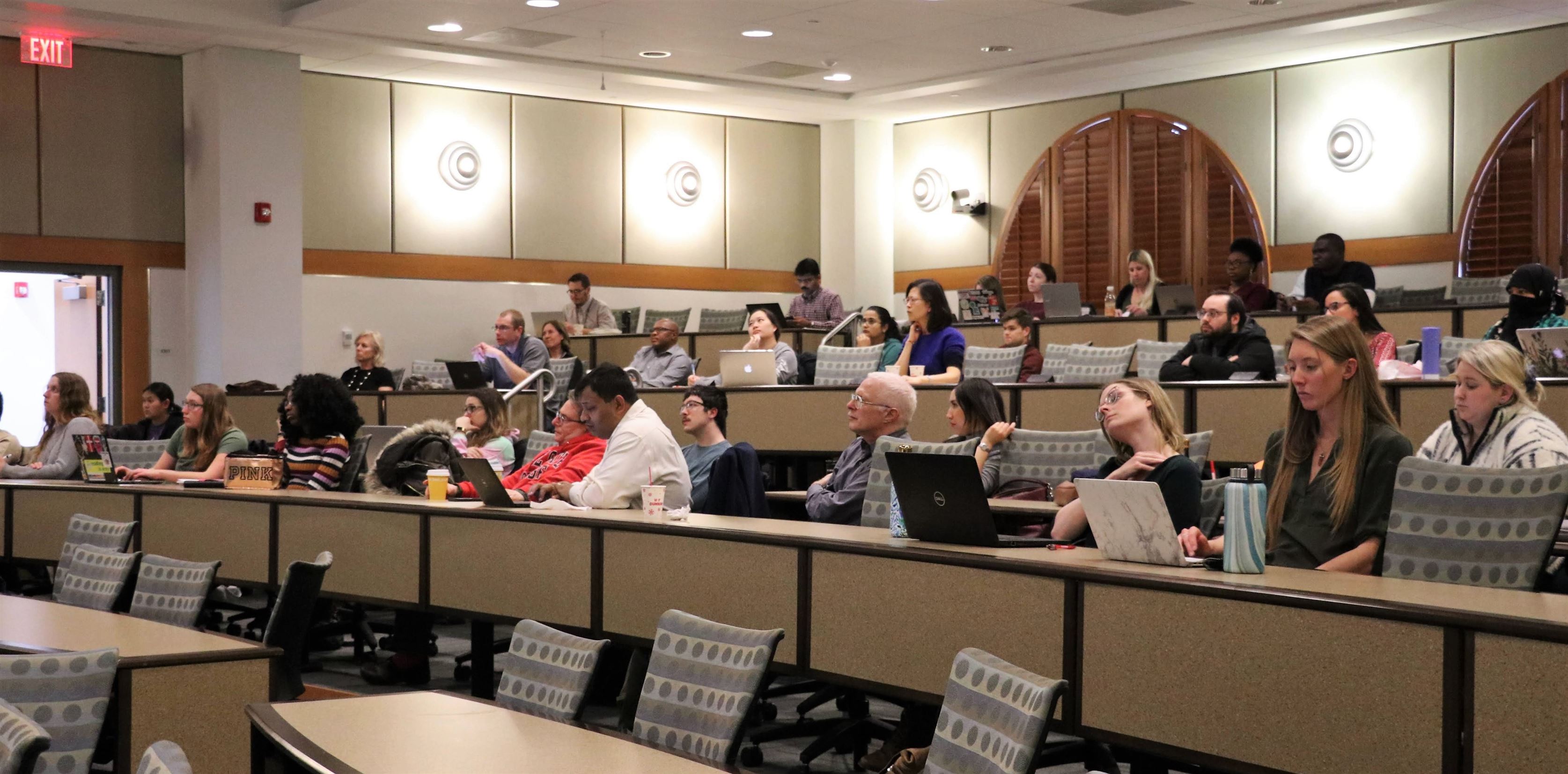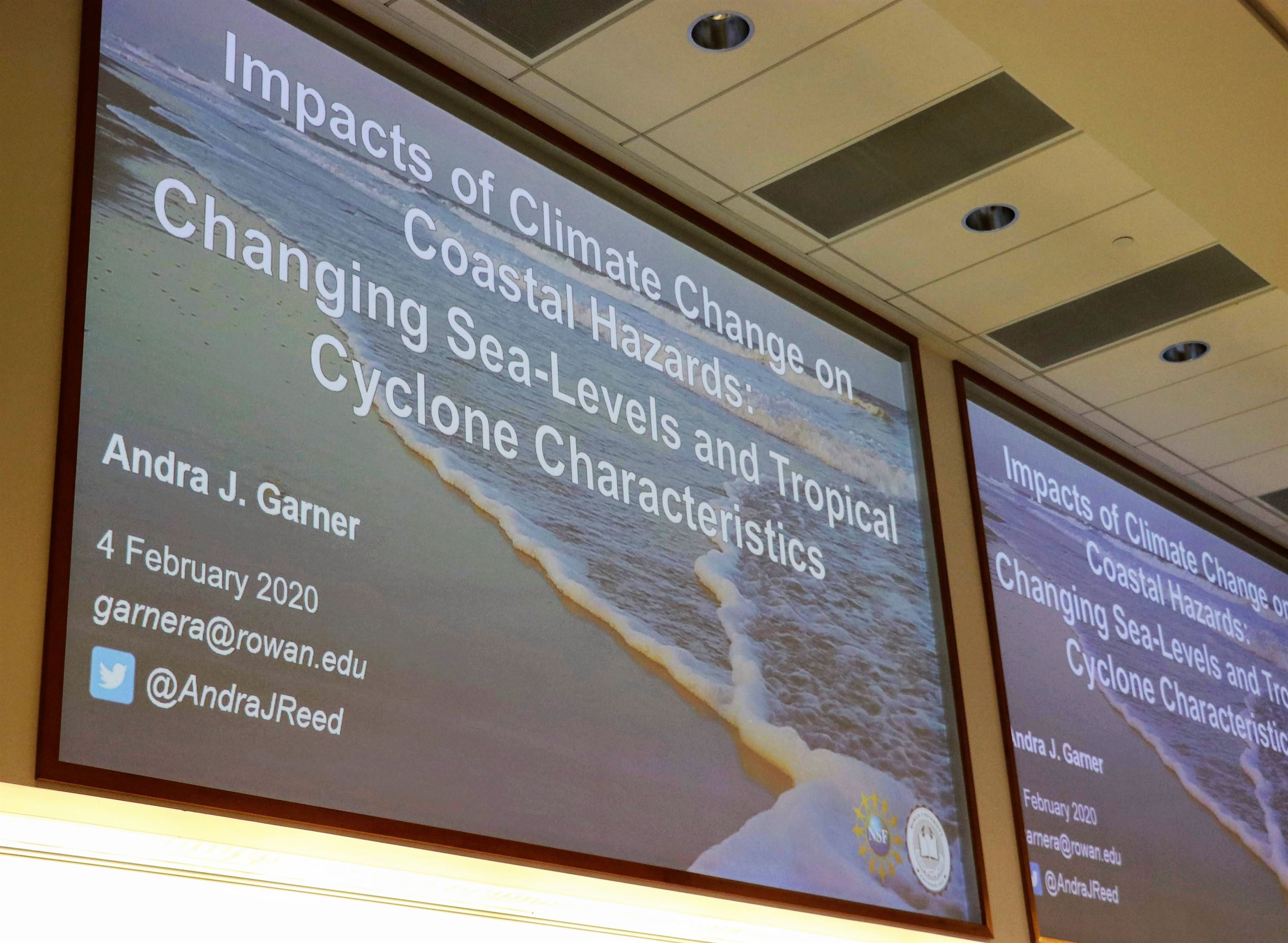Montclair State University students filled the Center for Environmental and Life Sciences (CELS) lecture hall to hear Dr. Andra Garner’s lecture on how climate change will affect coastal storms and sea levels in the New York area.
The event was hosted by Montclair State’s doctorate program in environmental sciences and management. The sustainability seminar runs for the duration of the semester every Tuesday at 4 p.m. in the CELS lecture hall.
Garner is currently an assistant professor at Rowan University with a doctorate degree in meteorology. During the lecture, she shared her research on her investigation into the evolution of sea level rise estimates, as well as her research on the impacts of a changing climate on tropical cyclones impacting the northeastern United States.
“Sea levels rising is something we are already feeling the impact of today,” Garner said. “In the past year there have been a number of stories that have shown this.”

Dr. Andra Garner addresses her audience about the impacts of climate change on coastal hazards.
Kyra Maffia | The Montclarion
Garner gave examples of this impact such as Indonesia moving their capital due to flooding and two different cyclones hitting the country of Mozambique in 2019.
The lecture also touched on the Paris climate agreement, which aims to limit global warming. Cutting emissions would reduce rising sea levels which impact coastal cities like Boston, New Orleans and Miami.
The lecture focused mainly on how the rising sea levels would affect the New York area, predicting that due to weather patterns, there has been a change in hurricane track patterns in the Atlantic Ocean.
Maija Wehmas, a first year doctorate student, feels that the sudden change in storm tracks is what is causing people to worry.
“They are more concerned about the fact that the tracks are changing,” Wehmas said. “Not necessarily that we are getting bigger storms.”
Storms that would normally stay out at sea are becoming more likely to come into landfall more in the northern areas affecting Western Europe, Canada and even Greenland.
“There are a lot of implications with these changing storm tracks not just for New York City, but for the North Atlantic basin and the U.S. in general,” Garner said.
Garner explained during the lecture that storms that normally only happen once every 500 years could possibly by the year 2100 happen once every 25 years.

A large crowd attended the event in the Center for Environmental and Life Sciences.
Kyra Maffia | The Montclarion
Maharsh Barot, a graduate student in sustainability science, was concerned over sea level rise projections in the New York area specifically.
“Potentially, the quality of life could be affected due to just natural disasters [and] storms,” Barot said. “We are already facing so many problems whenever a major storm hits, whether it’s here, North Carolina or further along our eastern coast.”
Despite the frequent storms and rise in sea levels, Garner explained that there is still hope left for climate change to be reversed.
“If we do act, we have the ability to avoid those worst case scenarios [and] we have the ability to adapt in our cities,” Garner said.



